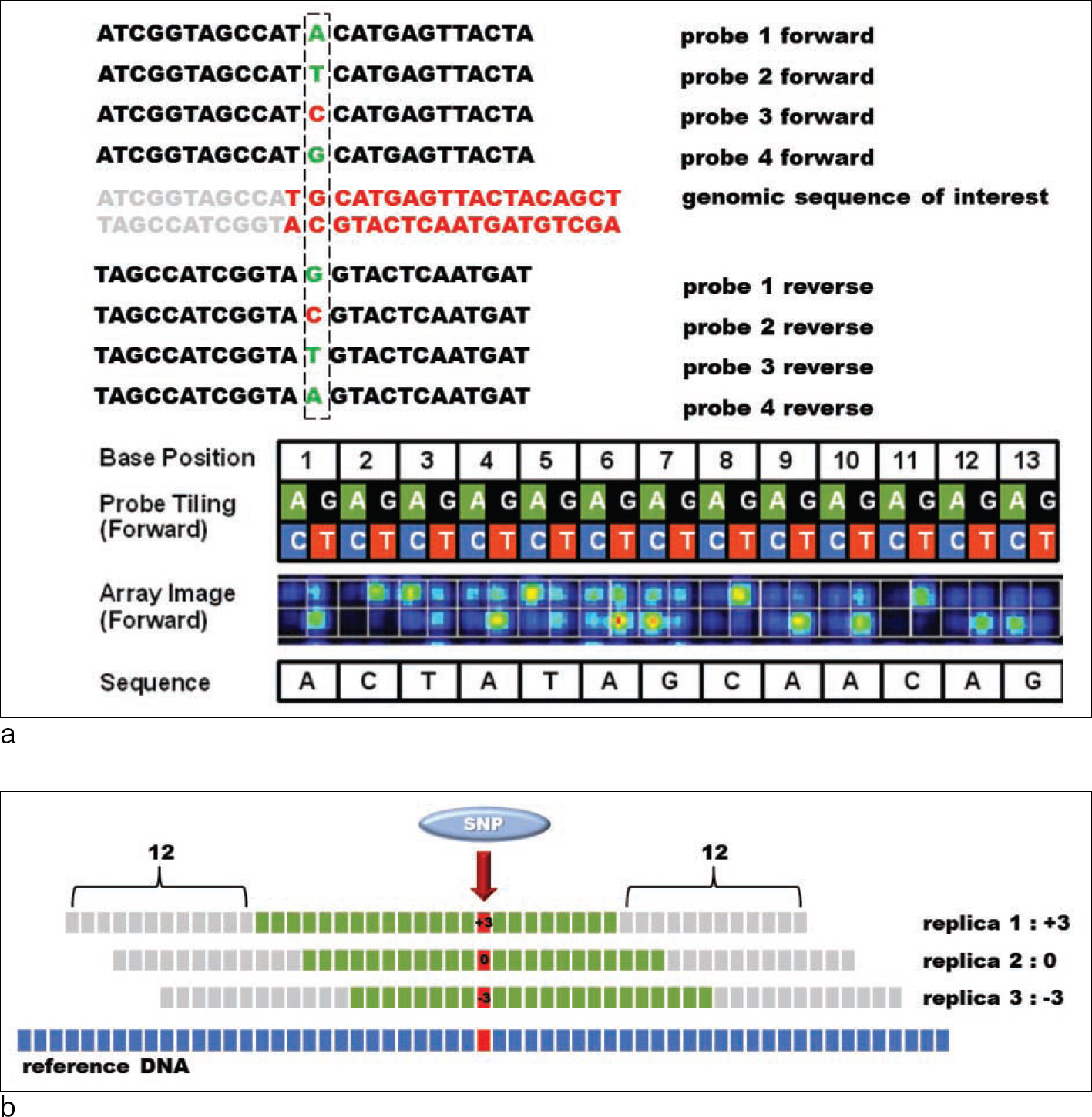Korean J Leg Med.
2013 Nov;37(4):224-229. 10.7580/kjlm.2013.37.4.224.
Genetic Relationship in Bone Samples Using SNP-Based Human Identification DNA Chip
- Affiliations
-
- 1Department of Forensic Medicine, Seoul National University, College of Medicine, Seoul, Korea. sdlee@snu.ac.kr
- 2Institute of Forensic Science, Seoul National University, College of Medicine, Seoul, Korea.
- 3DNA Link, Seoul, Korea.
- KMID: 1928021
- DOI: http://doi.org/10.7580/kjlm.2013.37.4.224
Abstract
- DNA profiling with sets of short tandem repeat (STR) markers is the most popular method for identifying human DNA in forensics. Identification by STR typing might fail when DNA is degraded or is present in low amounts, such as in disaster victim identification (DVI) samples. In such cases, more information might be obtained by using additional markers such as single nucleotide polymorphisms (SNPs). Multiplex PCR and microarray are convenient techniques to analyze SNP markers. We used an AccuID(TM) Chip, SNP-based DNA chip manufactured by DNA Link Corporation, to confirm genetic relationship between two human bone samples that had been buried for more than 50 years and blood samples from the alleged descendants of the sources of the bone fragments. The chip combines an Affymetrix resequencing array with a multiplex PCR technology and can genotype hundreds of SNP markers in a single experiment. Genotyping the two bone samples yielded 90.5 and 77 SNP markers. The commonly genotyped markers (61 and 47 SNP loci) in each bone-family pair provided high paternity indices to support the genetic relationships in both cases.
MeSH Terms
Figure
Cited by 1 articles
-
Limitation of Regular Autosomal STR Testing for Paternity within an Isolated Population
Sohee Cho, Hyung Jin Yu, Hee Jin Seo, Jisung Han, Yoonsoo Kim, Soong Deok Lee
Korean J Leg Med. 2014;38(4):175-179. doi: 10.7580/kjlm.2014.38.4.175.
Reference
-
1. Kim YL, Hwang JY, Kim YJ, et al. Allele frequencies of 15 STR loci using AmpF/STR Identifiler kit in a Korean population. Forensic Sci Int. 2003; 136:92–5.
Article2. Gross A, To ¨njes A, Kovacs P, et al. Population-genetic comparison of the Sorbian isolate population in Germany with the German KORA population using genomewide S-NP arrays. BMC Genet. 2011; 12:67.
Article3. Dixon LA, Dobbins AE, Pulker HK, et al. Analysis of artificially degraded DNA using STRs and SNPs-results of a collaborative European (EDNAP) exercise. Forensic Sci Int. 2006; 164:33–44.
Article4. Kothiyal P, Cox S, Ebert J, et al. An overview of custom array sequencing. Curr Protoc Hum Genet. 2009. Chapter7: Unit7.17.
Article5. Seo SB, Zhang A, Kim HY, et al. Technical note: efficiency of total demineralization and ion-exchange column for D-NA extraction from bone. Am J Phys Anthropol. 2010; 141:158–62.
Article6. Fung W, Hu Y. Statistical DNA forensics: theory, methods and computation (statistics in practice). New York: John Wiley and Sons, Ltd;2008. p. 47–78.7. Butler JM, Coble MD, Vallone PM. STRs vs. SNPs: thoughts on the future of forensic DNA testing. Forensic Sci Med Pat. 2007; 3:200–5.
Article8. Amorim A, Pereira L. Pros and cons in the use of SNPs in forensic kinship investigation: a comparative analysis with STRs. Forensic Sci Int. 2005; 150:17–21.
Article9. Sobrino B, Brion M, Carracedo A. SNPs in forensic genetics: a review on SNP typing methodologies. Forensic Sci Int. 2005; 154:181–94.
Article10. Seo SB, Lee HY, Zhang AH, et al. Effects of humic acid on DNA quantification with Quantifiler� Human DNA Quantification kit and short tandem repeat amplification effieicency. Int J Legal Med. 2012; 126:961–8.
- Full Text Links
- Actions
-
Cited
- CITED
-
- Close
- Share
- Similar articles
-
- DNA Chip as a tool for Clinical Diagnostics
- The Usage of an SNP-SNP Relationship Matrix for Best Linear Unbiased Prediction (BLUP) Analysis Using a Community-Based Cohort Study
- Sequencing analysis of HPV-other type on an HPV DNA chip
- A Clustering Tool Using Particle Swarm Optimization for DNA Chip Data
- Implementation of a Particle Swarm Optimization-based Classification Algorithm for Analyzing DNA Chip Data


